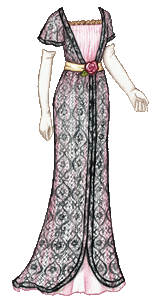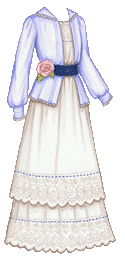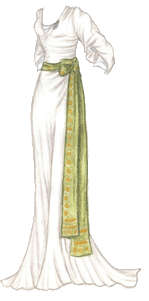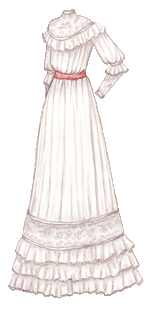 Click for larger version (PNG); click for PDF version. Click here for the list of dolls.
Click for larger version (PNG); click for PDF version. Click here for the list of dolls.
I just finished listening to The Intrusion of Jimmy by P.G. Wodehouse. I’ve mentioned it before on this blog, but I love listening to Wodehouse, because his stories are light and simple enough that I can miss parts if I get distracted by housework or chatter, but engaging enough that they keep my mind from dwelling on the dullness of dishwashing. Anyways, I’m always up for a story where boy meets girl, everything that can possibly cause boy maximum humiliation and trouble happens, but all comes right in the end.
The thing I liked best about this book was Jimmy’s character, because although a lot of Wodehouse’s heroes are rather more like Jimmy’s friend, Lord Dreever – the kind of laid-back fellow who pre-empts criticism by describing himself as “a bit of an ass” – Jimmy himself was curious, capable and generous. Now, the first two of those are rare enough, but he also seemed to have a darker side than any of the other Wodehouse heroes I can recall. At the beginning of the book, Jimmy makes a bet that he can break into someone’s house, and later that night a burglar happens to break into his own apartment; Jimmy disarms him, convinces him that he’s an infamous European jewel thief and gets the man to take him along on a burglary, all without turning a hair. It’s not like he views it as a lark; rather, he takes the whole thing quite seriously, breaking into someone else’s house almost as much out of curiosity as he did from the desire to win the bet. I guess his background as a reporter made his ability to keep so calm plausible, but still, that’s all pretty cold-blooded. Things like that made me feel that, as much as I liked him for his curiosity and wit, there was something about him that wasn’t quite right, and even though he never expressed the desire to steal so much as a rhinestone brooch, there was something about him that gave me the feeling that he very well could go in for a life of crime if it was interesting enough. It turns out that in the original story that the book was based on, Jimmy really had been a jewel thief! I somehow feel like he makes more sense to me now, although I can’t really hold his past incarnation against him.
Jimmy falls for a lovely girl named Molly, and taking the standard meet-cute love-at-first-sight Wodehouse pattern to new heights, he doesn’t ever actually talk to her during this process, but just admires her over the course of a five-day trans-Atlantic trip. I always figure that the Wodehouse heroines have the most marvelous, flattering, feminine clothes possibly available to humans, because eligible young men are always falling instantly in love with them, so it’s a disappointment for me that Wodehouse seldom describes dresses in detail. The book is from 1910, so here we have a 1910-style gown, with black lace over a pink dress. I do like the dresses I’ve seen from this year – the shape seems like a nice balance between the Edwardian shape and the straight-up-and-down lines that are coming.
By the way, I’ve never thought to look up what P.G. stood for; it turns out to be “Pelham Grenville.” Might have to swipe that one for our firstborn.
Prismacolors used: Kelp Green, Pale Sage, White, French Grey 10%, 20%, 50%, 70%, Light Umber, Dark Umber, Tuscan Red, Black, Cream, Pink Rose, Clay Rose
 Share
Share

